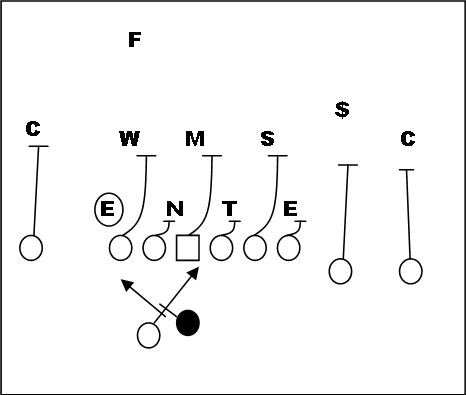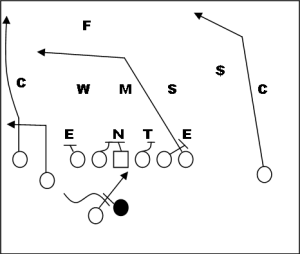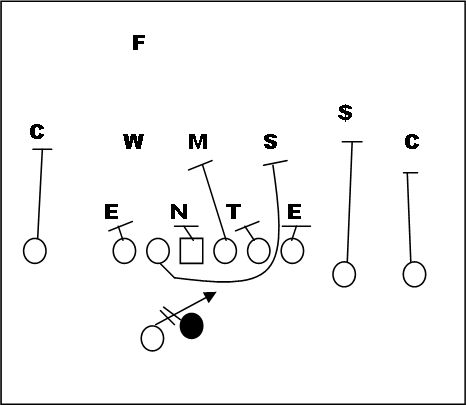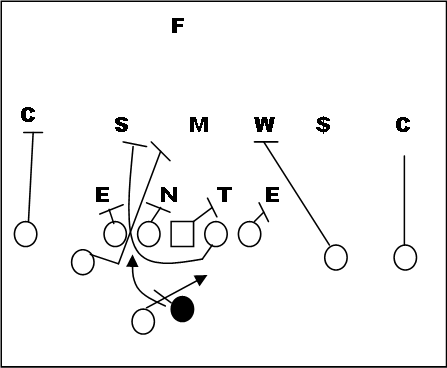USC came back in impressive fashion to defeat Ohio State in the Horseshoe Saturday night. The late-game drive was defining for the team. It showed their toughness and resolve to get together and get a win.
Unfortunately, it showed their weakness as well.
That late-game drive against a questionable Ohio State defense required that Joe McKnight put the team on his back and carry the Trojans to the 1-yard line, where Stefan Johnson could polish it off.
Where was Matt Barkley? He contributed- on 3rd and long on their own side of the field, he threw a gimme flare route to McKnight to pick up 21 yards. The next time he threw, he floated a strike to his tight end Anthony McCoy in the seam for a large chunk of 26 yards- really the only tough throw he had to make in the drive. He hit one more pass- a slant for 8 yards. Finally, he hit Joe McKnight on a bubble screen to go ahead by 3. Not bad- 4 for 6 and 55 yards passing on the final drive.
I’m not so optimistic. Joe McKnight accounted for 72 yards of the scoring drive, receiving and rushing. What’s wrong with that? The rushing yards came to hard all day for the Trojans:
3.0 yards per carry over the course of the game.
The passing yards came too difficult as well:
15 of 32 for 6.1 yards per completion.
Conclusion: The offense is broke. Well, maybe not the offense, but the new offensive coordinator, Jeremy Bates, has a ways to go to fill recent shoes. And I leave Lane Kiffin out of the list of shoes to fill.
That last drive had some imaginative play calling, and specific calls to exploit the defense. That didn’t happen all game. It was like watching an SEC matchup where each coach is simply trying to prove how hard their offensive line can push the other.
The playcalling was generally so entirely predictable and bland for a USC team that it was hard to imagine this team competing for a National Title. They looked like an SEC team- Great defense, inability to consistently move the ball. This is glaringly different from years of yore at USC.
Too many zone running plays on first down- not enough play action, screens, quick shots to get WR one-on-one on the sideline.
Too much running at an 8-9 man box- not enough play action.
Too little QB movement- an obviously athletic QB did not get moved around much and felt the heat because of it, not to mention tweaked his shoulder.
Too few quick passes.
No examples of exploiting a defense- not until the 4th quarter, 3rd and 8 on their own 19 yard line and Joe McKnight easily gets past the linebacker coming up to cover him. A gimme pass.
Too much defense- the defense was out on the field for way too long. Ohio State actually began to formulate a way to get down the field after a while there. No defense can play that much and survive unbeaten.
In the end, Pete Carroll was on camera all over the offensive play calling. Offensive coordinator Jeremy Bates was predictable and unimaginative with the talent he has control of.
So, on to the point of this article:
3 Games the Trojans have a good chance of losing:
September 19, at WASHINGTON
Watch for previous OC Steve Sarkisian to wear the USC defense down and put up points. Also, former USC Defensive Coordinator Nick Holt knows the USC D inside and out. It could be a barn burner.
October 3, at CALIFORNIA
Cal looks silly good so far. But they are doing damage mostly on the ground. That could play to USC’s strength. But if USC’s Defense can’t get off the field and the offense can’t score, look for Cal to wear down USC and run away with it.
Either October 17 at NOTRE DAME, November 28th vs. UCLA, or December 5 vs. ARIZONA
Notre Dame is obviously much improved and just might come out to win
UCLA could come in and surprise the Trojans in the battle of the L.A. basin, though QB woes make that less likely.
Arizona should be good this year and could ambush USC at the end of the year.
Why could USC drop these games?
1. Offensive production is suspect for the reasons listed above: The coordiantor and his strategy are suspect.
2. Expect the defense to play more snaps, take more hits, and give up more points.
3. The opposition is up this year. Competition is greater.
4. Matt Barkley will, and I mean WILL disappoint. It’s not his fault, he’s simply made some very, very stupid mistakes already and I think he’ll make a few more before USC switches to Aaron Corp mid-season.
5. Finally, like I mentioned before, USC looks like an SEC team- strong defense, bland offensive play-calling. They are predictable and ripe for the picking.
Being a life-long USC fan, I think this year will be infuriating, like I felt 2007 was with John David Booty starting for Lane Kiffin and Mark Sanchez waiting in the wings. USC is like any other school, though. Coaches have their politics- they have their favorites. No matter what you read about USC this year, and especially this week- do not believe the hype.







BCS Championship Review
leave a comment »
Chris Brown, over at Smart Football, reviewed the BCS Championship game. His second point is what really stuck out to me during the game. I watch a lot of PAC 10 ball, so I was really amazed at how Chip Kelly called the game.
Really, I think both coaches outschemed themselves.
First, Chip Kelly. His modus operandi this year has been:
1. Zone read and variations
2. Play action/Screens
3. under 15 seconds between plays
I’m not sure coach Kelly has these defined like this, but maybe he should.
The first two points are what many teams do frequently. The third point is Oregon’s strength. When I Tevo an Oregon game, I cannot skip ahead 30 seconds between plays. When a play ends for Oregon, I have to rewind 20 to 30 seconds, and then skip 30 seconds forward so that I don’t miss a play.
In the BCS Championship Game, Oregon started out with spread passing. 3-and-out. Then there were 2 drives that Oregon operated under the afore-mentioned parameters. Oregon 1)ran the ball effectively (3+ yards per) and 2)mixed in screens and play action, while 3)maintaining their usual pace. In fact, their pace was incredible- I had to rewind a full 30 seconds then skip 30 second in order to catch the next play. They were spending less than 10 seconds resetting and snapping the football. Auburn was gassed- evidenced by a 12 men on the field penalty and DL player taking a knee on the sideline. You weren’t hearing Nick Fairley’s name, except when a 15 yard penalty was involved.
Oregon got out in front and got a 2-point conversion. It felt like Oregon football. It was tough going, but it was fast-paced and methodical.
And then Kelly came out 1&2)throwing, going 3-and-out, especially in the second half, and 3)letting the play clock roll down into the 10 second area- unheard of. A lot of gadgets and misuse of the field (bunching to the boundary which naturally limits available grass) and Fairley and Co. get a second wind and tee off on Oregon.
Oregon’s offense was generally ineffective and overschemed. The ball was not put into the playmakers’ hands enough and the fundamentals of the system were ignored.
Auburn took advantage and held Oregon to 19 points.
Auburn’s offense is based on misdirection power football. They are dependent on a bigger line that can pull and lead, and a big QB to pick up 2-3 yards when needed. Passing is based on man routes, and this game showcased double-moves and formations creating natural mis-matches in coverage. The Auburn OL was impressive in protecting Newton, who I think is overrated at QB, but indispensable to the scheme in picking up the 2-3 yards sometimes needed (like Tebow).
Auburn’s running game became effective in the 3rd and 4th quarter, when they leaned on it more. Dyer picked up chunks, it fed the play action, and Newton himself converted 3rd down and short a number of times.
Auburn’s passing game with man routes counted on wide open receivers or throwing the ball up and counting on bigger, better receivers to get it. Auburn had both, and Cam Newton found those well. And when coverage was good, he found yardage with his legs.
Oregon was generally effective in limiting Newton’s big plays, limiting the Auburn run game, and limiting big plays. Auburn’s most effective offensive plays seemed to be bubble screens, flat throws, and out-and-up patterns.
Auburn’s offense was not dominant, nor was it particularly effective. 22 points would be a goal for any defense to be proud of holding Auburn to.
Overall, I think I learned some limits to the Spread Running game. Urban Meyer made a good comment post-game: the spread option offense has the need for a big back or QB to get the yardage in the red zone/GL+5 (Oregon lacked this, Auburn had this) and reinforced the importance of sticking to what one does best.
I thought it was a sloppy, unintelligent game overall, with both coaching staffs overscheming. In the end, Auburn settled into their bread and butter first (out of necessity to run the clock) and came out on top. There is a certain strength in knowing what you do best and doing best what you do best.
In the end, the defenses get the game ball, for making plays and capitalizing on offensive wonkiness. For the game ball, I would give it to Nick Fairley, if he wasn’t such a dishonorable player, so I give it to Auburn’s #5 Michael Dyer, who made tough, determined yards and won the game for Auburn.
If Oregon wins, the ball goes to Casey Mathews, who caused a game-changing fumble out of Cam Newton’s hands as well as being in the thick of the Auburn offense all evening. Yet another underrated Matthews. (I coached his older brother Bryce in High School- nowhere near the motor/determination of Clay jr. and Casey).
For me, the game was a snoozer- Two struggling running offenses trying to do too much outside of what they do best and man passing routes that ended up looking and feeling clumsy an simplistic. Not a great offensive game, regardless of the yards earned an not an interesting game, really.
Written by Jon Ellsworth
January 11, 2011 at 1:15 pm
Posted in Commentary, Defense Articles, Offense Articles, Uncategorized